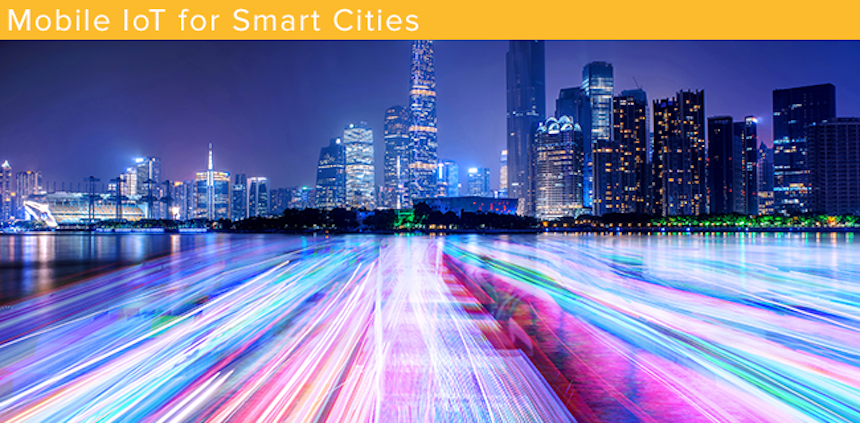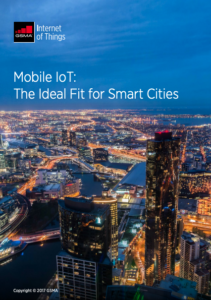Cities’ Unique Connectivity Issues
Many cities suffer from issues such as traffic congestion, air pollution, high asset maintenance costs and creating a safe environment in which to live and work. In order to solve these issues, sensors are typically used to monitor the environment, control assets remotely and collect data for the city to analyse and act upon. Once these sensors are in place, intelligent decisions based on the data retrieved can be made, and efficiency savings can be introduced. Traffic can be re-routed away from problematic areas, street lighting can be dimmed when it is not needed and waste can be collected only when bins are full. Services throughout the city can be optimised in ways that have just not been possible in the past.
In order to install and connect these sensor types, a network that meets certain attributes is needed. Cities will find that they have several network options from a large range of different providers.
When making their selection, cities need to consider networks that offer:
Scale:
Across cities, there can be hundreds or thousands of sensors, all measuring and monitoring different assets and attributes. A city needs a single network that can scale to connect these sensors, in regards to both number and geography. Additionally, a network should be able to communicate with these sensors at any time of day, whether on a scheduled basis or ad-hoc as real-time data is needed. A network that requires additional hardware to expand to new areas of the city or a network that can only support slow download of data is not best suited to a city’s needs as they require ongoing investment and heavy-touch management to ensure that they are optimised for the city.
Low Cost:
Cities need to avoid the unnecessary costs of building communications networks, and at the same time maximise the savings that communications networks can bring to new smart cities services. This means that more budget is available for services where it counts. The city must weigh up the balance of investing in a new network upfront before deploying services, or using an existing proven network, which will be updated over time as specifications change. Existing networks offer economies of scale for end-devices and modules, as the cost of devices and sensors to connect to the network can be much lower up-front.
Quality of Service:
To offer high quality services to its citizens, a city should consider the quality of its communications networks which link and control these services and sensors. A network which is not able to offer adequate bandwidth to meet the city’s needs, or one whose provider is unable to offer good local support for it is unlikely to be a good investment, as issues with the network will lead to issues with the cities services, which will impact citizen satisfaction. Networks that operate in licenced spectrum will offer a high quality of service than those that do not, as the risk of interference is lower and bandwidth can be higher.
Long Life Span:
Once a city has invested in deploying a smart cities service, the city needs to be sure that the ongoing maintenance needs of the equipment and network behind the service are minimal. To minimise the risk of this, the city should look for a service provider who is established and has a good record of accomplishment for deploying and maintaining communications networks. If the city is looking for a service that will be in place for a long period of time, they should ensure that the service provider will be able to support it for its entire lifespan and can operate in-situ for a long time period without having to visit and upgrade the units regularly. Cities should also consider how to maintain sensors and devices that do not have access to mains power. Battery powered devices in particular will need careful consideration regarding network type, to ensure that their lifespan is maximised.
Data Security:
Data security is essential to ensure that a smart cities service is trustworthy and data collected cannot be misappropriated. Smart cities services can collect sensitive data such as licence plates, or the movements of people. Therefore, it is imperative that the city considers the security attributes of any communications networks and devices that they are looking to deploy. A data breach of even anonymised data can lead to a loss of trust in the city and service and ultimately the services failure.
Citizen Engagement:
The way in which the city wants to engage with its citizens is a necessary consideration. If the city wants to have real-time interaction, and provide up to date information on traffic, air quality and other important information, then other factors needs to be considered that ensure the communications network and associated platforms are fit for purpose.
All of these factors needs to be considered by a city looking to deploy smart city services. Additionally, the type of service to be deployed will have a large impact on the network choice available. High bandwidth services such as connected CCTV will have different needs to a connected streetlight. A single network provider that can cover all of these different use cases is very positive partner for the city, and avoids the need of deploying and integrating different technologies to support different services into the future.
Cities need a partner who understand communications networks, devices and data, allowing them to focus on the service, not the technology.
Mobile IoT: The Ideal Fit for Smart Cities
Monday 3 Jul 2017 | Smart Cities Highlights | Smart Cities Resources |
The introduction of Mobile IoT networks from mobile network operators will offer a scalable, secure and standardised way to connect smart city assets across a wide variety of services in an economically sustainable way. Mobile IoT ...

